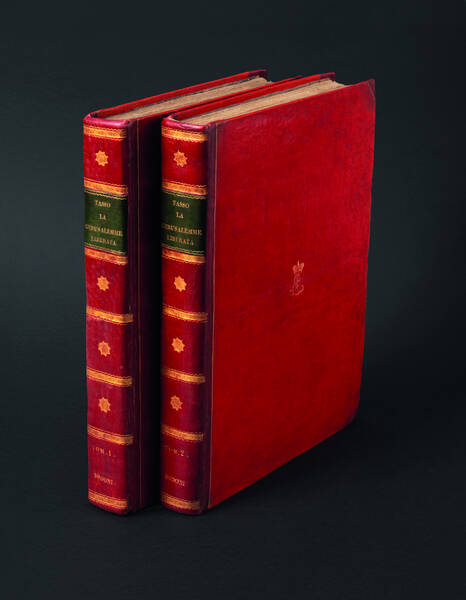TAEGIO, Francesco. Frencisci Taegii phisici et equitis Candida et vera narratio dirae ac cronicae Papiae obsidionis.
Pavia, cussa apud Iacob de Burgofranco., 1525 die XIII Aprilis.Quarto (210 x 146 mm.) [22] leaves; title-page with an elaborate woodcut border, illustrated with a vignette of a sacrificial lamb, grotesque figures and the image of Minerva, goddess of victory, in a tondo, the printer's device of Jacob de Burgofranco is also included in the border; two historiated initials. A very fine copy in nineteenth-century paper boards with manuscript title on the front cover.
First edition of the chronicle of the siege of Pavia written by Francesco Taegio, which was followed by an Italian translation edited by Ottavio Ballada and printed in Pavia (1655), and a third edition published in Nuremberg (1736). The chronicle, dedicated to Antonio de Leyva, the commander of the imperial army besieged in Pavia, begins with the French invasion of the Duchy of Milan. After easily taking the capital, Francis I advanced toward Pavia, already weakened by famine and the plague off the previous summer. The siege began on October 28th, 1524, and concluded on February 24th, 1525, with the battle between the French besiegers and the imperial reinforcements led by Charles III Duke of Bourbon, who had marched from Lodi. The events in Pavia marked a decisive moment in the 16th century: the bloody imperial victory forced Francis I, now a prisoner of Charles V, to sign the renunciation of all claims to Italy and Burgundy. Meanwhile, the highly unfavorable conditions of the Treaty of Madrid led to a new phase in the Italian Wars, with the War of the League of Cognac and the subsequent Peace of Cambrai. Ultimately, Pavia came to symbolize the definitive assertion of Spanish and Habsburg power under Charles V in Europe.
The author, however, limits himself to outlining the events, following the chronology from the beginning of the siege to the end of the battle from the perspective of someone experiencing the events firsthand. He does not feel the need to frame the narrative with broader political or historical considerations, also due to the very short time passed between the events and the publication of the work. Taegio emphasizes this episodes highlighting the role played by the dedicatee, the Spanish captain de Leyva, in the victory against Francis I: these include de Leyva's decision to melt down his own gold to meet the payment demands of the Landsknechts and the speech in which he indignantly rejects the Spanish king's suggestion to surrender Pavia to the French to avoid its destruction. Also noteworthy is Taegio's attention to the use of arquebuses by both sides, reflecting their emerging importance as a key element in the composition of European armies.
Francesco Taegio was a physician, philosopher, and knight, from Novara. In 1520 he became professor of philosophy at the University of Pavia. In his posthumous autobiography, the mathematician Gerolamo Cardano (1501– 1576), recalled attending some of Taegio's lectures.
Taegio's chronicle is the last book printed in Pavia until 1539: the battle of 1525, along with a series of subsequent sackings, led to a prolonged interruption of all printing activities in the city, which did not fully resume until the 1560s. Jacopo da Burgofranco himself, who was a university custodian, bookseller, and printer-publisher specializing in academic works, left Pavia for Venice, where he worked from 1528 until his death in 1538. USTC records only two copies in institutions outside of Italy (BL and Bibliothèque Mazarine), although are records of a copy in the collections of the Bayerische Staatsbibliothek in Munich.
EDIT16 CNCE 56073; USTC 857920; BMSTC Italian 654; Brunet V 642 cites another edition of the same work under a different title, printed in the same year, as well as a Koln edition under this title. Argelati, I, pp. 1475-6; BNO I 1525; G. Tinazzo, Il tipografo-editore Iacopo Pocatela (Pavia 1490-Venezia 1538), in Atti e memorie dell'Accademia Patavina di scienze, lettere ed arti 70 (1957-1958); UNPAV p. 169.
Other Books

SANSOVINO, Francesco
Venetia città nobilissima et singolare, Descritta in XIIII libri da M. Francesco Sansovino
€ 6.000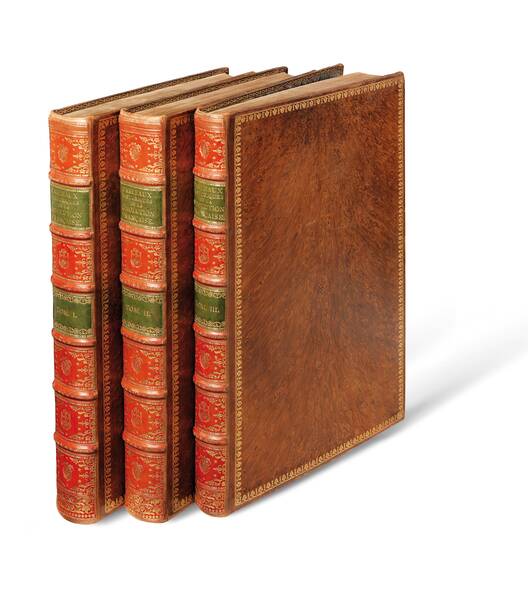
[FRENCH REVOLUTION]
Collection complète des tableaux historiques de la révolution française.
SOLD OUT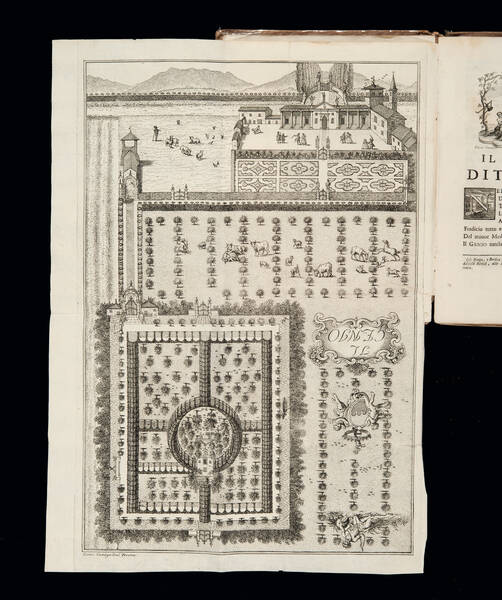
ACANTI, Aureliano (CANATI, Valeriano)
Il Roccolo ditirambo di Valeriano Acanti Acc. Olimpico Vicentino.
€ 5.000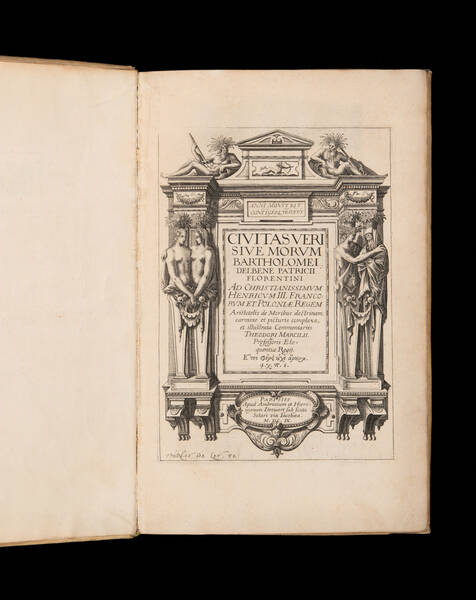
DEL BENE, Bartolommeo
Civitas veri sive morum ... illustrata commentariis Theodori Marcilii.
€ 19.000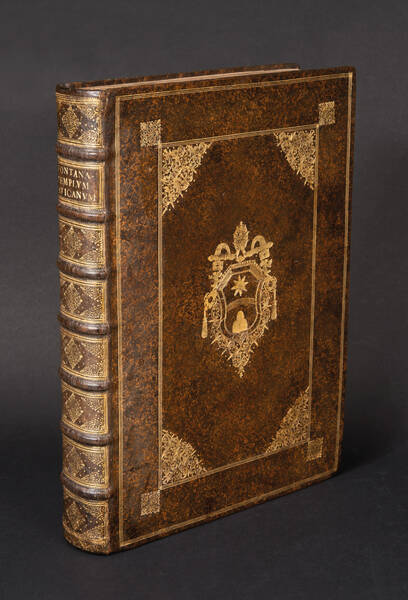
FONTANA, Carlo
Templum Vaticanum et ipsius origo cum aedificiis maximè conspicuis antiquitùs, & recèns ibidem constitutis; editum ab equite Carolo Fontana ... opus...
€ 38.000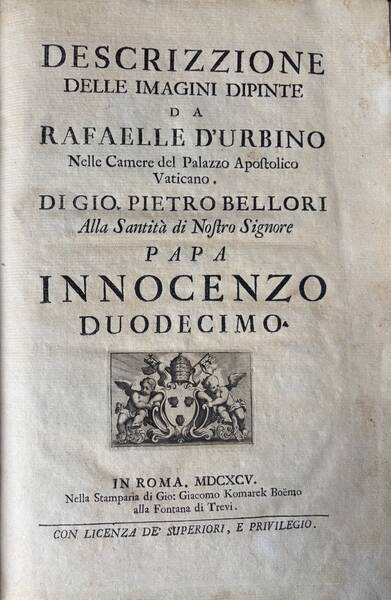
BELLORI, Giovanni Pietro
Descrizzione delle immagini dipinte da Rafaelle d'Urbino nelle camere del palazzo Apostolico Vaticano.
€ 2.500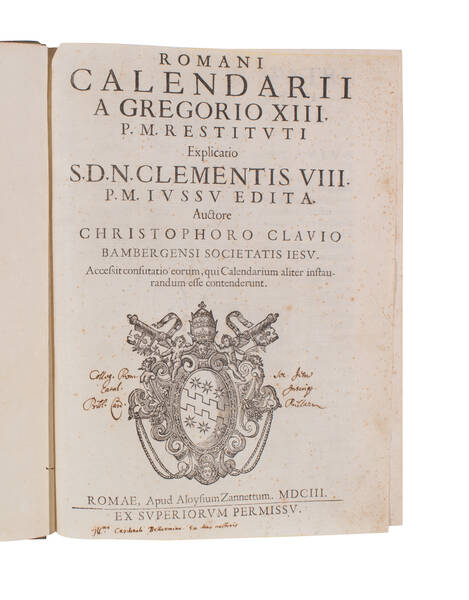
CLAVIUS, Christoph
Romani calendarii a Gregorio XIII. P.M. restituti Explicatio S.D.N. Clementis VIII. P.M. iussu edita.
SOLD OUT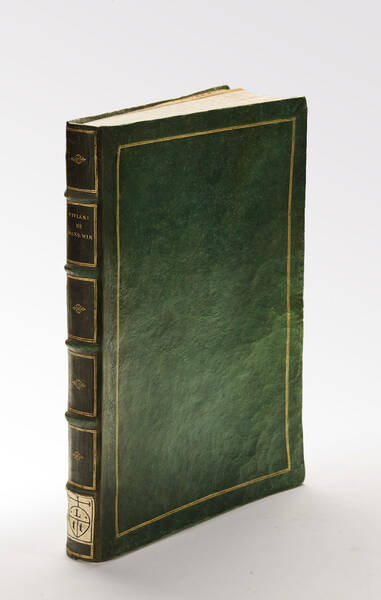
VIVIANI, Vincenzo
De maximis et minimus geometrica divinatio in quintum cononicorum Apollonii pergaei.
€ 8.000
PETRARCA, Francesco
Li Sonetti canzone e triumphi del Petrarcha con li soi commenti non senza grandissima euigilantia et summa diligentia correpti et in la loro primaria...
€ 9.000
ARIOSTO, Ludovico
Orlando furioso di m. Lodouico Ariosto nuouamente adornato di figure di rame da Girolamo Porro padouano et di altre cose che saranno notate nella...
SOLD OUT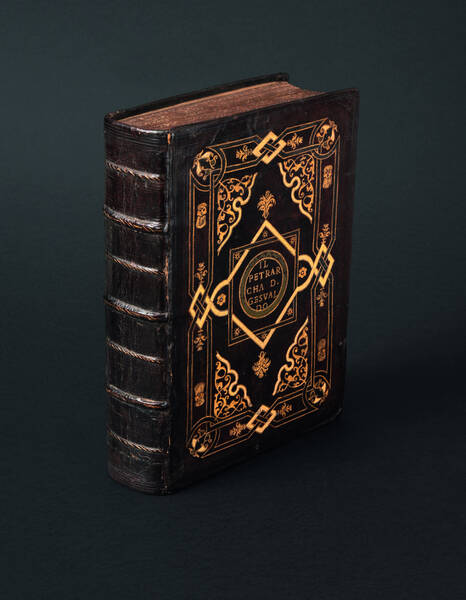
PETRARCA, Francesco
Il Petrarcha colla spositione di misser Giouanni Andrea Gesualdo. I Triomphi del Petrarcha colla spositione di misser Giouanni Andrea Gesualdo da...
SOLD OUTMEDA RIQUIER rare books ltd.
4 Bury Street St James's
SW1Y 6AB London
Phone +44 (0) 7770457377
info@medariquier.com
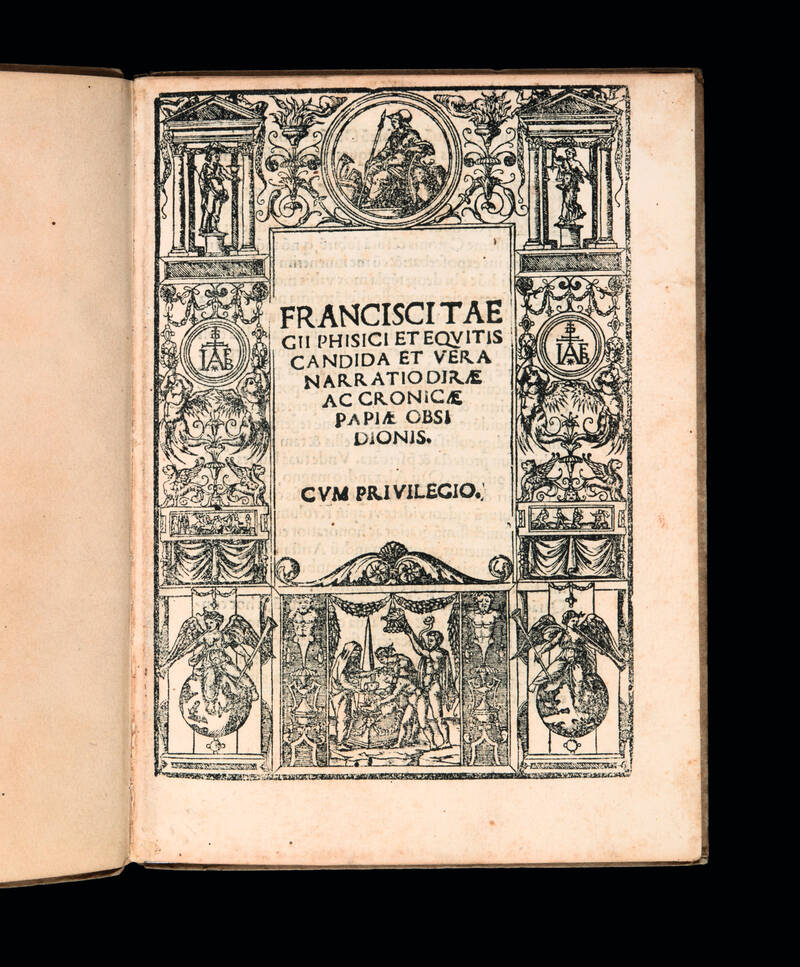
![[Life of the Virgin Mary] [Life of the Virgin Mary]](https://www.medariquier.com/typo3temp/pics/cbb0f7a08f.jpeg)
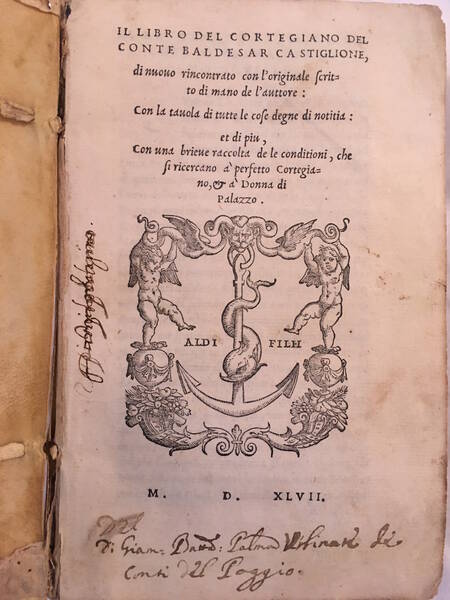
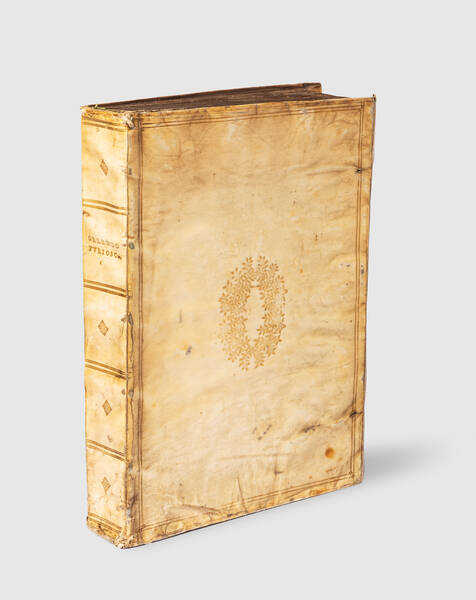
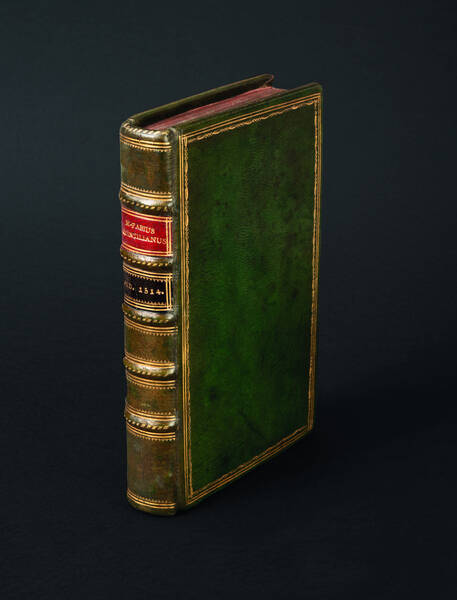
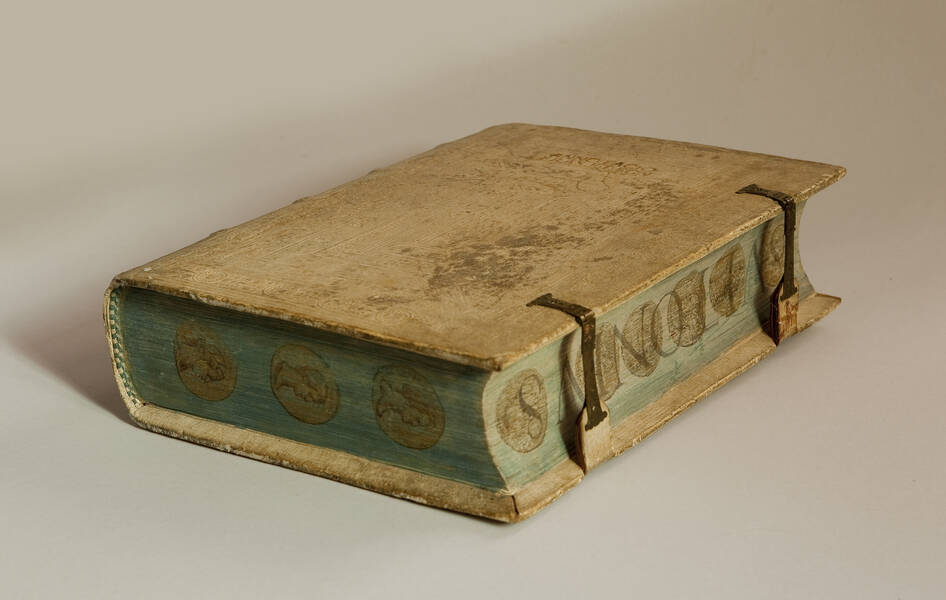
![MORE, Sir Thomas. De optimo reip. statu deque nova insula Utopia ... Epigrammata [with:]DESIDERIUS ERASMUS. Epigrammata. MORE, Sir Thomas. De optimo reip. statu deque nova insula Utopia ... Epigrammata [with:]DESIDERIUS ERASMUS. Epigrammata.](https://www.medariquier.com/typo3temp/pics/9344bb41f5.jpg)
